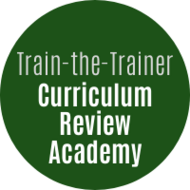(View Complete Item Description)
Students get one class period (52 minutes) to find a real problem on campus, document it, develop a solution and prepare a market-based presentation to be peer-reviewed the next day. The main goal of this project is to highlight the importance of collaboration when working under a tight deadline - a common situation in today's working world.
This project integrates engineering, design and business concepts and meets learning standards from 9th to 12th grade.
Material Type:
Assessment,
Interactive,
Lecture,
Lesson Plan,
Simulation,
Teaching/Learning Strategy

















